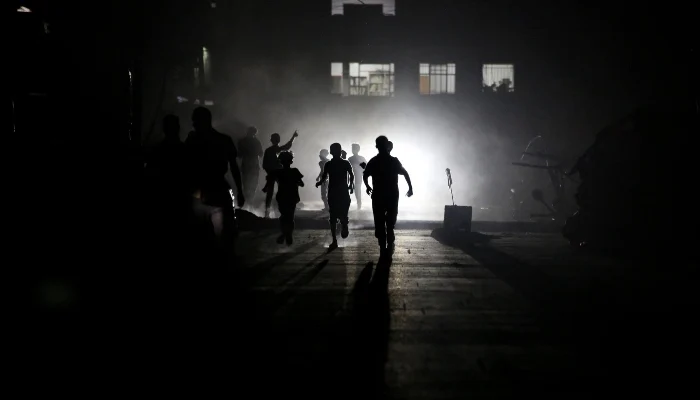Select Language:
Moein al-Hattu’s house has been completely destroyed, with its cinder block walls blown into the street and a dusty, gray bomb hanging threateningly from a damaged pillar, its tip resting on a shattered dresser. This heavy munitions, weighing over a ton, was dropped during an airstrike in Gaza City amid clashes between Israel and Hamas but hasn’t detonated yet.
“I live in constant fear and can’t remove it,” al-Hattu told AFP, as children wandering through the debris paused to look at the dangerous object. The gray-bearded Palestinian wants to secure tarps over the ruins of his home and return, but has been unable to find anyone in Gaza capable of removing the massive bomb.
“The authorities, whether civil defense or the municipality, say they can’t get rid of it. Who do I report to?” he asked. “If it had gone off, it would have caused huge destruction, damaging at least five or six homes.”
After two years of conflict, Gaza’s heavily populated cities, home to more than two million Palestinians, are filled with military debris, including unexploded but still deadly munitions.
Kids in Gaza play in the streets with pieces of rockets and mortar fins, seemingly unbothered or unaware of the danger. According to a report by Handicap International, Israel has dropped approximately 70,000 tons of explosives on Gaza since October 7, 2023.
In January, UNMAS warned that between 5 and 10% of these bombs failed to explode, leaving dangerous remnants that fighters or frightened residents might recover or stumble upon.
At Gaza’s Al-Shifa Hospital, Mohammed Nour sat beside a bed holding his two injured children. They watched on silently and wide-eyed, their legs chained and shrapnel on their skin as he recounted how they were hurt.
“We were setting up our tents when the boys went looking for wood, nylon, and cardboard to burn for cooking,” Nour explained. “Suddenly, about ten meters away, we saw boys being thrown by the blast. We didn’t initially realize they were our children, and then we found them scattered everywhere.”
While Nour’s sons may keep their limbs, six-year-old Yahya has lost part of his right hand and is heavily bandaged. His grandfather, Tawfiq al-Sharbasi, sits beside him, gently stroking his hair.
“These are children. What did they do wrong? They were just playing,” Sharbasi said softly.
Unicef Palestine spokesperson Jonathan Crickx told AFP it’s difficult to estimate how many children have been injured by unexploded ordnance, but recent reports indicate at least eight children have been seriously hurt by explosive remnants since the ceasefire.
So far, no demining equipment has been authorized to enter Gaza by the Israeli military.







